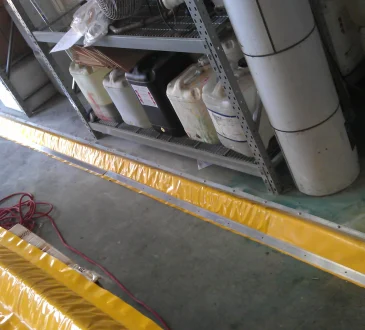
Any unenclosed, freestanding structure is considered a rack. When deciding on a rack, it’s important to keep a few things in mind. Access to the equipment and cables on all sides is much easier with an open rack as opposed to a cabinet. A rack provides superior air circulation to cabinets for any equipment that requires cooling. Racks, being open, are best used in less secure environments or behind lockable doors, such as server rooms or closets. Moreover, rack supplier in KL is often more affordable than cabinets.
Multiple rack configurations are available
When deciding on a rack, it’s helpful to first consider its intended contents. This will tell you if a wall-mounted or floor-standing rack is more appropriate, as well as when you need a smaller 2-post or a more substantial 4-post rack.
- Multiple choices
Depending on the machinery you need to store, many alternatives are at your disposal. A two-post racking with wire management is ideal for mounting patch panels. However, a 4-post racking makes more sense if you have a wide variety of deep equipment, such as networking gear, servers, and patch panels. The rails on certain four-post racks are movable front to back, allowing you to attach equipment of varying depths with ease.
- Dish widths
Racks primarily consist of straight rails with slots for attaching shelves and other accessories. The most common rack rail spacing is the EIA-standard 19″, with hole-to-hole centers typically measuring 18.3″. Rackmount adapter brackets allow for the racking of smaller devices. There are 23-inch wide racks available for installing older, legacy equipment. Patch panels may be easily installed in a two-post rack using threaded 12-18 or 10-32 gaps while servers can be securely fastened to a four-post rack with M6 square mounting holes.
- Stacking levels
A very important consideration is the height of the rack, which is expressed in rack units. One rack unit, abbreviated as 1U, is equal to a space that is 1.75 inches in height. For example, the height of a 2U device requires three inches of storage space to accommodate it. As a result of the eight-foot ceiling heights that are typical in most houses, floor-standing racks typically measure 45 units in height. There are also bigger 58U-high wall mount units and more compact 10U-high wall mount variations available. These towering racks, the highest of which may reach heights of nine feet, allow an extremely dense installation of hardware while using very little space estate.
- Hanging shelves
Racks that save space and may be attached to the wall are an excellent choice. They are a boon in environments with limited space, such as wire closets and corridors. Some offer bin supplier Malaysia even come with a design that allows the connections and gadgets to be connected and installed with ease thanks to a swiveling mechanism. Still, additional low-profile racks provide vertical flush mounting of equipment against a wall, significantly reducing the space that they take up in a room. The mounting holes on the majority of wall-mounted racks are separated by 16 inches, and some of them additionally include attached support boards.




